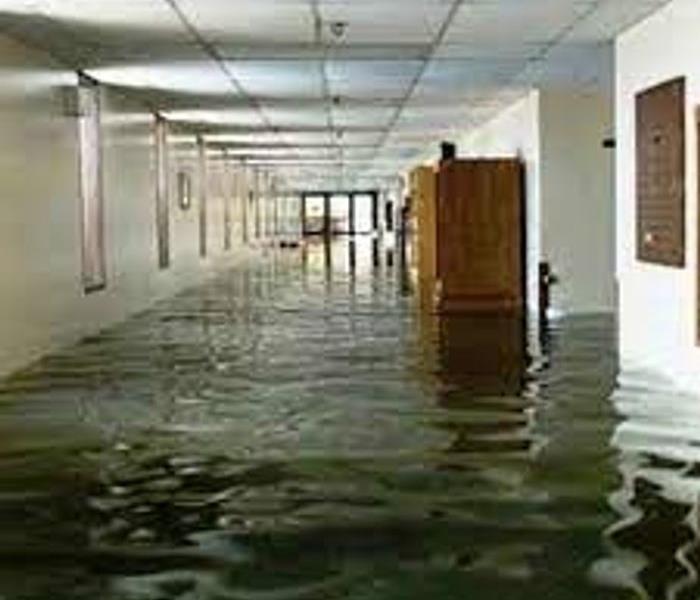Causes Of Commercial Water Damage & How To Handle It
4/5/2022 (Permalink)
 Commercial water damage restoration is always more multifaceted, detailed and demanding than residential water damage restoration.
Commercial water damage restoration is always more multifaceted, detailed and demanding than residential water damage restoration.
Water damage in the office can not only stop work as you know it… it can also put you and your co-workers in danger. The minute you detect indications of commercial water damage, it’s essential to take action immediately.
Commercial water damage restoration is always more multifaceted, detailed and demanding than residential water damage restoration. This is because commercial properties have to take into account several tenants, as well as areas and configurations– and there’s the added pressure of timeliness since tenants want to get back to business quickly.
Whereas several water damage issues are predictable, extra difficulties can be avoided once the cause of water damage is established. In this article, we’ll discuss the most usual causes of water damage in commercial properties and how to deal with them. Here’s what you should know…
1. Damaged pipes
Cracked pipes can stem from plenty of causes, like deviations in pressure, degraded water supply lines and sewer sanitation clogs. Freezing temperatures can cause pipes to rupture. Bloated barriers, water marks on walls or floors, broken or unattached shingles, and mildew odor are all indications of damaged pipes. Identifying dripping pipes is not always an easy task– it typically requires several tools and a bit of time to find the problem area(s).
2. Roof drips
A dripping roof can cause ceiling destruction, mold or decay matters, fire dangers from shortened wires, and compromised structural reliability. Heavy rains and snow make roofs susceptible to destruction. Improper snow/ice elimination can also generate water damage in roofs.
3. Pooling at the base
If channels are not gutted frequently, they can get congested, causing water to outflow into the property through the roof or at the base. One of the most typical indications of leaks of this sort are pools of water adjoining or surrounding the base of the building. Poor sewer structures can also result in water damage at your base.
4. HVAC issues
HVAC structures function by heating or cooling the air via a sequence of pipes. Over time, these pipes/ducts wear out and/or get impaired, leading to leaks. The HVAC system needs to be gutted (cleaned/cleared) frequently. And extra water from the compression tanks has to be eliminated to avoid water damage.
5. Generate a flood plan
Flooding can occur at/on your property. There can be flooding issues due to drainage system catastrophes, overflowing nearby rivers, and even melting snow conditions. It’s important that you come up with a plan on what you will do if/when a flood occurs, and have this plan done before the flood happens.
6. Do a water damage check-up frequently
Water damage deterrence is more inexpensive than restoration. To avoid water damage, have a SERVPRO of Kendall County examine your property a minimum of once a year. Leak discovery is done in numerous ways, like moisture checking and the use of detection devices.
7. Spend time and money on maintenance
A precautionary maintenance strategy can help keep your commercial building protected and secure. Various areas of a commercial structure must be examined in order to be maintained properly. For instance, gates, windows, and doors ought to be inspected yearly for deterioration.





 24/7 Emergency Service
24/7 Emergency Service